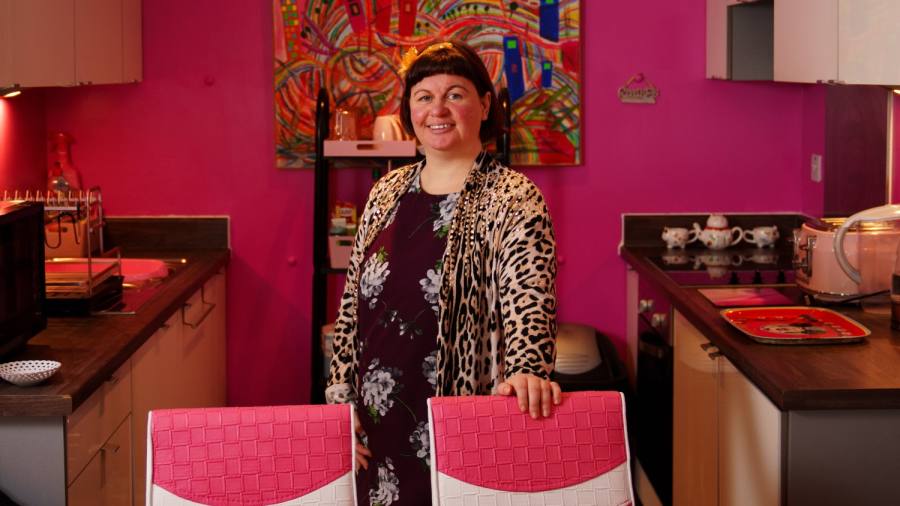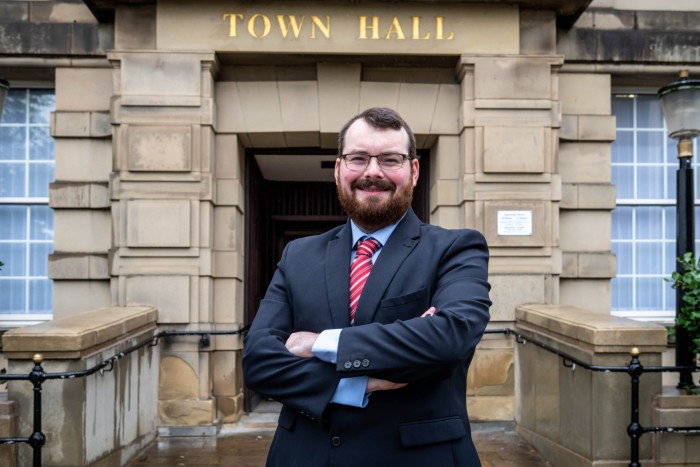
Claire Shepherdson spent seven years on employment and support allowance, a UK sickness benefit, after her autism, dyslexia and learning difficulties left her struggling to find work.
Now, supported by carers, the 37-year-old is happily settled in her own flat, has had her art exhibited in a local gallery and is loving her work as a cleaner at Bury Grammar School near Greater Manchester, saying she feels “really honoured” to have the job.
Shepherdson credits the support she received from an employment officer at Working Well, a council-run welfare-to-work scheme in Greater Manchester, for her transformation. Since it began almost 10 years ago, the project has helped 66,000 people struggling to re-enter the labour market, including 23,000 on sickness benefit.
The government would like to see many more people following in Shepherdson’s footsteps. According to the official Labour Force Survey (LFS), around 2.5mn people, or 6 per cent of the working age population, is currently “inactive” — not seeking or available for work — due to long-term sickness, the highest rate in almost 18 years.
While attention has focused on the large number of over-50s who opted to leave work during the pandemic, ill-health is the largest contributor to this inactivity for the first time since records began. It accounts for 29 per cent of the total, compared to 25 per cent before the Covid pandemic.
Nor is it only the middle aged or elderly who are too sick to work. The LFS shows that the largest percentage increases since the start of the pandemic have been among younger people. Rates of inactivity due to long-term sickness rose 26 per cent for 16 to 24-year-olds in the three years from September 2019 to September 2022.
While some blame lengthy waits for NHS treatment for the increase, long-term sickness is often just one of a number of reasons for people leaving the workforce; others include retirement, caring for family members or studying.
Rates of inactivity due to long-term illness have increased far more for those who have been out of work for longer. For over-50s out of work for more than five years, inactivity due to sickness has risen 0.9 percentage points since the start of the pandemic, three times higher than for those who left work more recently.
While the UK is not the only country seeing a rise in the numbers on sickness benefit, it is out of step with the majority of the OECD economies. All OECD members experienced increased rates of inactivity in the first half of 2020 but the UK is among the fifth that still have higher rates than before the pandemic, according to the Office for National Statistics.
But it is too easy to suggest that the UK population is simply sicker than international counterparts, suggested Torsten Bell, chief executive of the Resolution Foundation, which studies low-to-middle earners. He pointed out that many other countries have also seen a marked rise in the number of people suffering mental ill health, as well as some increase in physical ill health due to ageing populations.
One reason that a bigger proportion of the UK population is on disability benefits may be that claimants are better off than they would be on unemployment payments. Of the 34 OECD countries that submitted data, the UK has the least generous provision after two months as a proportion of previous in-work income. Even after a year, only four countries perform worse.
“Basically it’s quite hard to be out of the labour market in Britain, unless you’re disabled, because you won’t have enough money to live on,” Bell said.

Under Sir John Major’s Conservative government, deindustrialisation thrust thousands of men on to the unemployment rolls, many in poor health from a lifetime toiling down mines or in steelworks. To reduce the number of unemployed, many were encouraged to claim disability benefit.
Now, with low unemployment, the government is focused on “trying to get people off disability benefits and failing to do so because more people are sick than we want, whereas in the 80s and 90s it was getting people off the unemployment roll on to disability benefits so they didn’t count in the unemployment figures”, said Bell.
However, the government may struggle to find the right solutions, suggested Graeme Cooke, director of insight and policy at the Joseph Rowntree Foundation, the social policy research group.
He pointed out that the government’s approach to disability benefits over the past decade, which focused on claimants having to demonstrate they were too ill to work and imposed stringent conditions, “has very largely been counter productive”.
Cooke said the government’s pledge to scrap the Work Capability Assessment, which is used to determine whether an illness or disability is severe enough to prevent someone from working, would be welcomed by many.
But he added that the change would make little difference without better support to help people back into employment, including access to further and higher education, paid work placements and a more flexible mindset among employers, as well as guarantees that no one would lose out financially from any change to benefit assessments.
Far more effort is also needed to stop people dropping out of the workforce in the first place, Cooke said. This might involve more comprehensive sick pay and a less punitive, more compassionate approach to sickness absence.

In Greater Manchester, Eamonn O’Brien, a councillor who has been closely involved with the Working Well programme that helped Shepherdson, said of the 23,000 long-term sick people the scheme has worked with, around 9,600 had found work — a proportion that he concedes “might not blow people away”. But it represents a significantly higher success rate than national programmes.
O’Brien puts this down to an approach tailored to each client’s needs and circumstances. “By looking at the person, as a whole, as part of a community, as part of a place, you can actually start to pull together services a lot more easily,” he said.
He believes spending on returning, or moving, people into the workforce must be regarded as an investment.
“We want to try and make the case that this has a saving, this has a benefit, not only to the lives of the people involved, but . . . to the jobs market, the economy, to the benefits bill, to the health service,” he said, adding that policymakers need to “stop looking at this from a departmental perspective”.
For Shepherdson, the benefits of employment after seven years on sickness benefit are clear in the pride she feels at the end of a shift when the school caretaker puts his thumbs up and tells her “well done Claire — good work”.